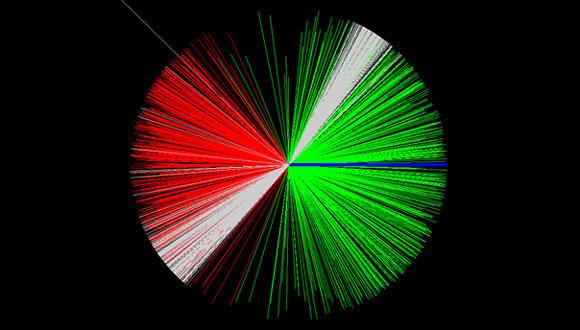סמינר ארצי בפיזיקה גרעינית
PROGRAM
14:30 - 14:45 Refreshments
14:45 - 15:45 "Exploring proton and nucleus short-range structure in proton-nucleus collisions at the LHC", Mark Strikman, PSU
Abstract:
The LHC experiments collected unique data on the proton-nucleus collisions. I will argue that analysis of these data would allow testing the prediction of the nuclear models with short-range of the presence of superfast (x>1) quarks in nuclei. Also, such an analysis would significantly improve our knowledge of the EMC effect at large momentum transfer.
A seeming violation of Glauber model centrality dependence of production of forwarding jets in pA scattering will be described and an explanation based on the color fluctuation phenomenon will be presented. The resulting 3D image of the nucleon will be described. Finally, a procedure will be described for observing double parton interactions in pA collisions. Such an observation would allow probing parton-parton correlations in nucleons and nuclei.
15:45 - 16:15 Coffee Break
16:15 - 17:15 "Beta-Delayed Charged Particle Measurements for Studies of Novae and X-ray Bursts", Moshe Friedman, MSU
Abstract:
Classical novae and type I X-ray bursts are energetic and common thermonuclear astrophysical explosions. However, our ability to understand these events is limited by the lack of comprehensive nuclear data on proton-rich nuclei. Specifically, constraining the 30P(p,gamma)31S and 15O(alpha,gamma )19Ne reaction rates has been found to be crucial to the understanding of nucleosynthesis and energy generation in these events. As direct measurements of these reactions are not technically feasible at the present time, indirect measurements of dominant resonance strengths by beta-delayed protons and alpha particles are used. A previous measurement at NSCL identified a new 31S state at Ex = 6390 keV to be a key resonance for 30P proton capture at peak nova temperatures. A significant feeding of 3.38% from 31Cl beta decay was observed, which enables the determination of the resonance strength by measuring the corresponding 259 keV beta-delayed protons. Similarly, a previous measurement at NSCL observed a 0.0156% feeding of the 19Ne state at 4034 keV, a key resonance for the 15O(alpha,gamma)19Ne reaction, by the 20Mg(beta p) sequence. This feeding is sufficient to determine the resonance strength by measurement of the proton-alpha pairs. A gas-filled detector of beta-delayed charged particles has been designed and built to measure the aforementioned decays at NSCL and FRIB. The detector is coupled with the Segmented Germanium Array (SeGA) to enable coincidence detection as an additional probe of the decay scheme and for normalization purposes. The first phase of the detector functions as a proton calorimeter, and was successfully commissioned with 25Si(beta p)24Mg and used to measure several decays of interest. We will report on the performance of the detector and present preliminary results. We will also discuss the upgrade of the detector into a TPC for the measurement of the 20Mg(beta p alpha) sequence.


